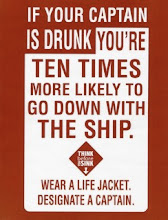Summer Safety Tips for Boaters Looking for a Good Swim - NEWS from BoatUS  |
| PHOTO BY LAKE EXPO |
ALEXANDRIA, Va., August 8, 2011 – “Boating and swimming often go hand-in-hand,” says BoatUS Director of Damage Avoidance Bob Adriance, “but adding alcohol to that mix can lead to some unintended outcomes.” Charged with combing through the BoatUS Marine Insurance Claims files to identify unsafe boating behaviors and help boaters avoid injury or accidents, Adriance knows what he’s talking about. “People know not to drink and drive a boat, but they don’t always know that it’s not a good idea to drink and swim,” he added.
Buried deep in the claims files, Adriance comes across a story about a group of friends having drinks at a Florida resort that decided to go for a moonlit tour of the harbor. At midnight, despite choppy seas and 20-knot winds, their boat is allowed to drift while several jump in. Unfortunately, winds quickly sweep the boat away, so the captain “backs down” on the swimmers in the water to get everyone back aboard. Amazingly, no one is hurt except for a 40-year old woman – later identified as a good swimmer – who is simply never found.It’s no secret that alcohol often causes people to take unwise risks while at the same time inhibiting their ability to think quickly in critical situations. With up to about 50% of all adult drownings involving alcohol, BoatUS has the following information that all boaters should know:
- Medical researchers have found that combining alcohol and swimming without taking in sufficient carbohydrates can be dangerous. In the Florida case, it is believed that the woman had only a salad and two glasses of white wine for dinner, but when adding the exercise of a midnight swim, she may have developed hypoglycemia, or low blood sugar, which causes weakness and confusion.
- US Coast Guard tests have shown that environmental stressors – sun, wind, wave motion, vibration and glare – can slow a boat operator’s reaction time and make them prone to more errors. This fatigue reduces an operator’s reaction time as much as drinking alcohol alone. However, when you combine the two, it can lead to boaters missing ten times as many “cues” as those who are only exposed to the environmental stressors alone.
- Alcohol also inhibits the body’s signaling system so that swimmers may not realize how quickly hypothermia has set in. In one case from New England, a man who was drinking beer on a sunny day fell overboard, but the cold waters quickly prevented him from climbing back aboard. He tried to swim to shore but never made it.
- Sudden cooling of the skin can also cause caloric labyrinthitis and/or hyperventilation. An inner ear disturbance, caloric labyrinthitis causes disorientation leading some swimmers to become confused on which way is up. Hyperventilation can also cause a swimmer to “breathe in” water.
- Know what drowning looks like: someone who is drowning lacks lung capacity to call for help. Drowning victims move their arms as though climbing a ladder, taking quick gulps of air before slipping back under. In an adult, this can last up to a minute before the victim never resurfaces – a child may only do this for 20 seconds.
- Never jump overboard before ensuring the depth of the water and knowing that it’s free of underwater hazards such as rocks, shoals, stumps, or other structures. Also pick swimming areas away from boating traffic and strong currents. It’s always best to anchor, shut down the motor, and deploy the boarding ladder before going in.
- ABOUT BOATUS:
- BoatUS – Boat Owners Association of The United States – is the nation’s leading advocate for recreational boaters providing over half a million members with government representation, programs and money-saving services such as boat insurance. For membership information visit www.BoatUS.com or call 800-395-2628. For a free online insurance quote, go to www.BoatUS.com/insurance or call 800-283-2883. For more information on boating safety, go to www.BoatUS.com/Foundation.


No comments:
Post a Comment